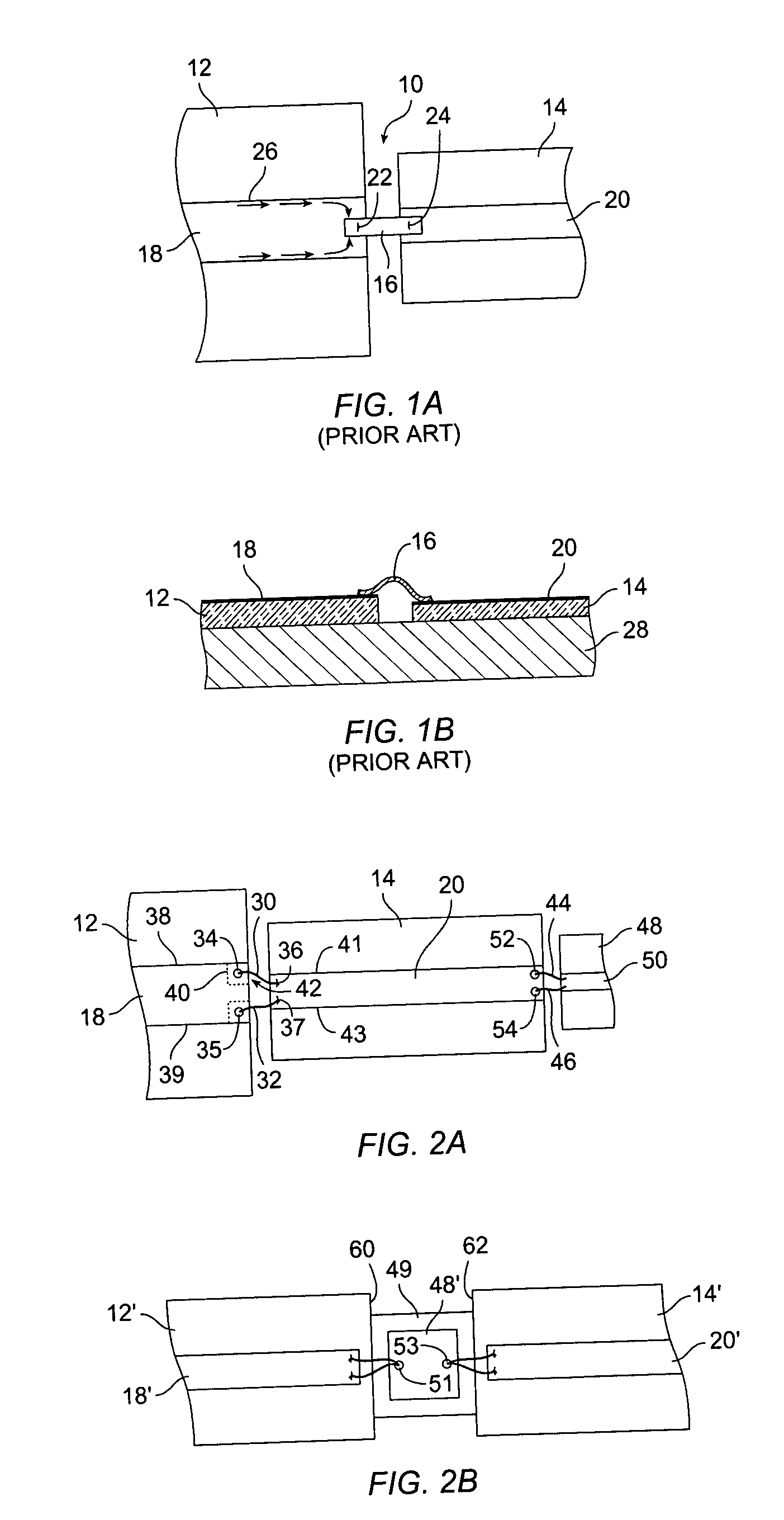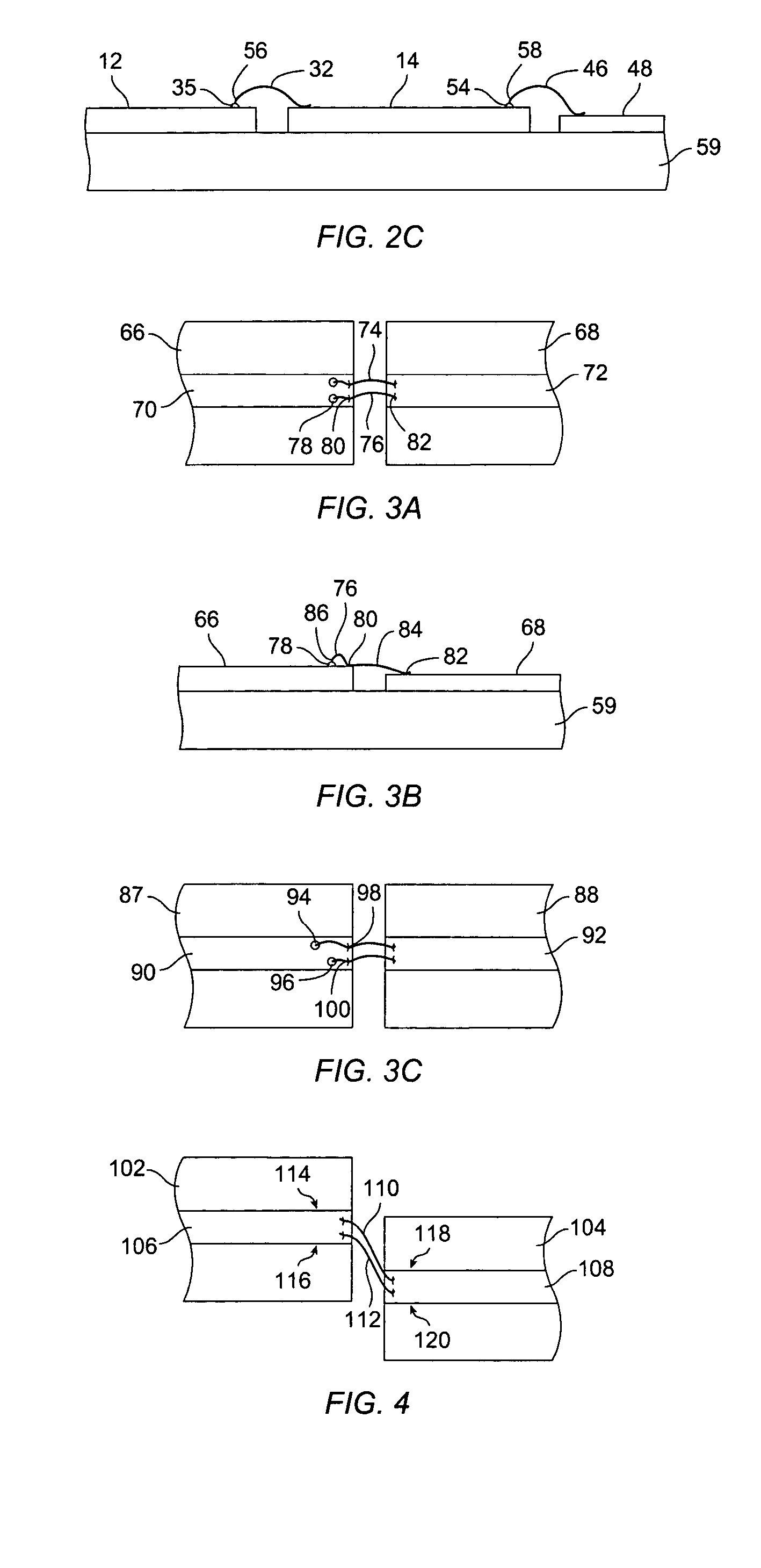Electrical interconnection for high-frequency devices
a high-frequency electrical and interconnection technology, applied in the field of interconnection of high-frequency electrical devices, can solve the problems of signal discontinuity, degrade the performance of the mic, mesh and ribbon bonding still present an impedance discontinuity, etc., and achieve the effect of improving the impedance continuity
- Summary
- Abstract
- Description
- Claims
- Application Information
AI Technical Summary
Benefits of technology
Problems solved by technology
Method used
Image
Examples
Embodiment Construction
I. Introduction
[0025] The present invention enables connecting one planar transmission device to a component, such as another planar transmission device or an electronic device, with improved impedance continuity. Most of the current in a planar transmission device flows on the surface and along the edges of conductive regions, such as along the edges of the center conductors of microstrip or co-planar transmission lines, and along the opposing edges of slotline transmission structures. Conventional methods of interconnecting a planar transmission device to a component often result in the current flow having to “bend” from the edge of the conductive region to the bond, which is believed to degrade impedance continuity.
[0026]FIG. 1A shows a plan view of a prior art electrical interconnection 10 connecting a first microstrip transmission line 12 to a second microstrip transmission line 14. The electrical interconnection 10 includes a ribbon 16 bonded to center conductors 18, 20 of th...
PUM
 Login to View More
Login to View More Abstract
Description
Claims
Application Information
 Login to View More
Login to View More - R&D
- Intellectual Property
- Life Sciences
- Materials
- Tech Scout
- Unparalleled Data Quality
- Higher Quality Content
- 60% Fewer Hallucinations
Browse by: Latest US Patents, China's latest patents, Technical Efficacy Thesaurus, Application Domain, Technology Topic, Popular Technical Reports.
© 2025 PatSnap. All rights reserved.Legal|Privacy policy|Modern Slavery Act Transparency Statement|Sitemap|About US| Contact US: help@patsnap.com



